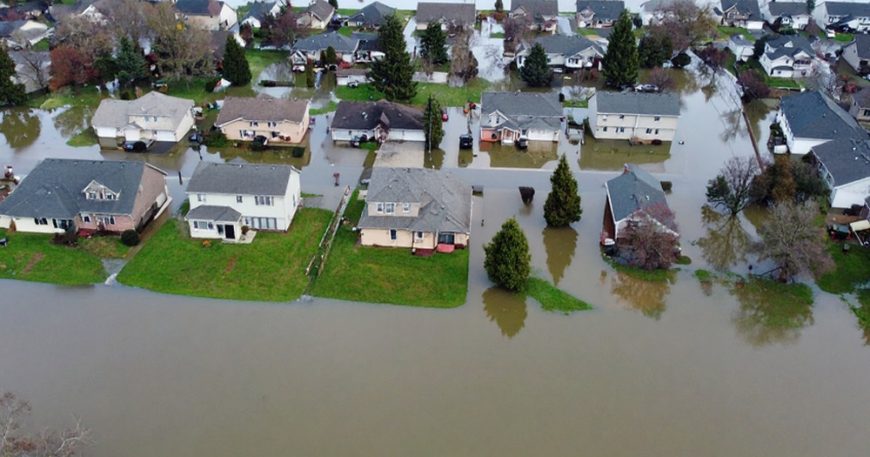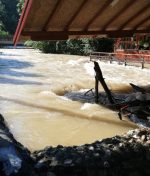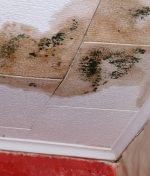How Can Landscaping Help Protect Your Home from Flooding?

- July 29, 2025
- byadmin
- Flood Restoration
When people think of flood prevention, they often picture sandbags, sump pumps, or waterproof barriers. But one of the most overlooked and powerful defenses against water damage starts right in your own yard. Smart landscaping design can significantly reduce the risk of flooding around your home, protecting both your property and peace of mind.
At RAMM Water Restoration, we’ve seen how homes in San Diego suffer flood damage not just because of weather—but because of poor drainage, improper grading, and water pooling due to landscaping missteps. Fortunately, landscaping doesn’t just enhance your curb appeal—it can also act as a strategic buffer against floodwater.
Here’s how thoughtful landscaping choices can help protect your home from flooding and prevent the kind of damage that leads to expensive repairs and mold growth.
1. Proper Yard Grading Directs Water Away
One of the most important elements in flood prevention is yard grading. Your landscape should slope away from the foundation of your home, allowing rainwater to naturally drain into safer areas rather than pooling around the base of your house.
If your yard is flat or slopes toward your home, even a modest amount of rain can collect around the foundation, potentially seeping into basements or crawl spaces. Proper grading can:
- Prevent basement leaks
- Reduce foundation erosion
- Minimize standing water in high-risk areas
A professional landscaper can adjust the soil grade or add swales (shallow trenches) to help channel runoff to a designated drainage area.
2. French Drains and Dry Creek Beds Manage Runoff
If your property tends to collect water during heavy rains, installing a French drain or a dry creek bed can make a major difference. These features help guide excess water away from your home and into appropriate drainage systems or low-lying areas.
- French drains consist of perforated pipes buried in gravel trenches that collect water and redirect it underground.
- Dry creek beds are decorative rock channels that simulate a natural stream, slowing runoff and reducing erosion while improving aesthetics.
These systems can be especially helpful in flood-prone San Diego neighborhoods where sudden downpours overwhelm stormwater systems.
3. Rain Gardens Absorb Excess Water
A rain garden is a shallow, planted depression designed to collect and absorb rainwater runoff from roofs, driveways, and patios. Rather than allowing water to rush toward your home, a rain garden captures and filters it through deep-rooted plants and amended soil.
The benefits of a rain garden include:
- Reducing surface runoff
- Filtering pollutants naturally
- Enhancing your yard’s appearance
- Supporting native birds and pollinators
To be effective, rain gardens should be placed at least 10 feet from your home and filled with water-tolerant, deep-rooted native plants.
4. Permeable Surfaces Reduce Water Accumulation
Traditional concrete driveways, walkways, and patios don’t allow water to pass through, so rain simply runs off and can pool around your property. In contrast, permeable pavers or gravel pathways allow rainwater to soak into the ground instead of contributing to runoff.
Replacing impermeable surfaces with permeable ones can significantly reduce the volume of water flowing toward your home. This small change can have a big impact in areas prone to flash flooding or poor drainage.
5. Strategic Planting Helps Stabilize Soil
Plants do more than beautify your yard—they can also strengthen the soil, prevent erosion, and soak up water. Shrubs, ornamental grasses, and trees with strong root systems help anchor the soil and reduce runoff.
Planting densely can also break up the flow of water across your yard, slowing it down before it can accumulate near your home. Consider using a mix of ground covers and deep-rooted native species that are drought-tolerant and adapted to the San Diego climate.
6. Mulch Can Help—or Hurt—Depending on Use
Organic mulch like wood chips or bark is great for retaining moisture and supporting plant health, but it can also contribute to flooding if misused. When too much mulch builds up near the foundation of your home, it can trap moisture and direct water toward your house instead of away from it.
To make mulch work for you:
- Keep it 6–12 inches away from your foundation
- Use a thin layer in flood-prone areas
- Avoid piling it up too high
In the right places, mulch can reduce erosion and promote better water absorption in your garden beds.
7. Gutter Extensions and Downspout Redirection
Even with perfect landscaping, if your gutters and downspouts are pouring water directly next to your home, flooding is inevitable. Gutter extensions and splash blocks are simple, inexpensive tools that can direct rainwater from your roof safely into your landscaping features or drainage system.
Redirected downspouts can also feed into rain barrels or rain gardens, minimizing waste and putting rainwater to good use.
How we can help
At RAMM Water Restoration, we know that protecting your home from flooding starts long before the storm hits. Our compassionate, expert team in San Diego works with homeowners who’ve experienced the consequences of poor drainage and hidden flood risks. While we specialize in flood damage restoration and mold remediation, we also believe in helping you prevent future problems before they start.
If you’ve already experienced flooding or suspect your yard design may be putting your home at risk, we’re here to help assess, restore, and guide you through the recovery process. Our friendly approach and deep local experience mean we treat your home like it’s our own—with care, honesty, and respect.
Don’t wait until water damage strikes. Contact RAMM Water Restoration today and let’s talk about how your landscaping and our restoration expertise can work together to keep your home safe, dry, and secure.









